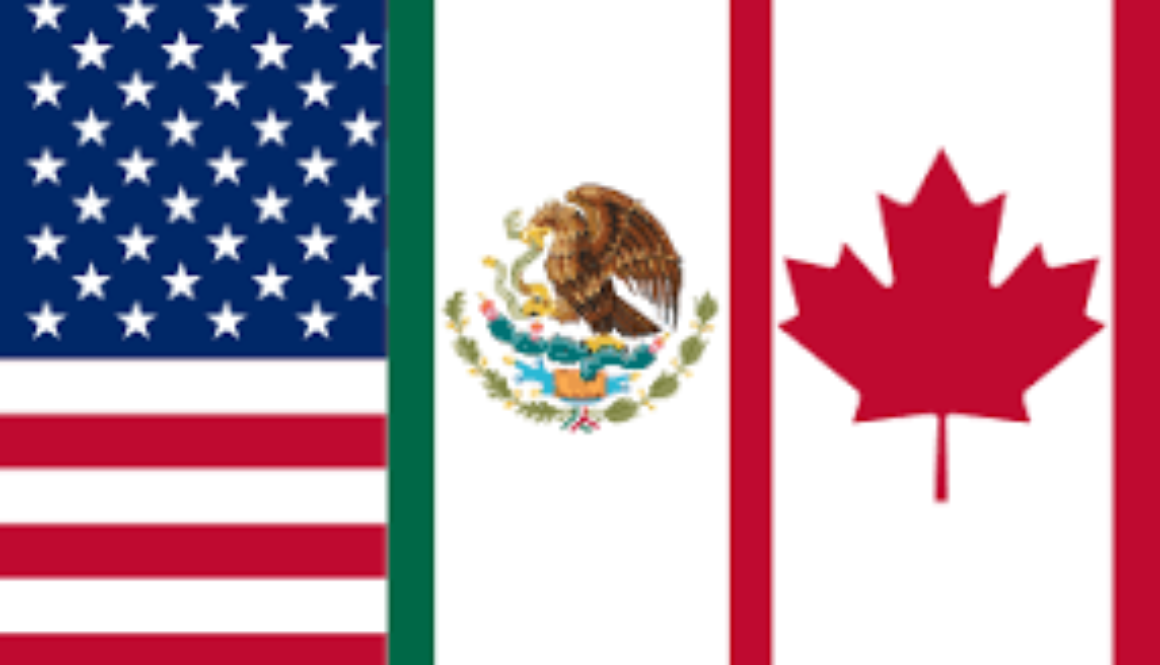Six keys to understanding the new USMCA trade deal
The USMCA trade deal between the United States, Mexico, and Canada will restore certainty to more than US $1.1 trillion in annual trade between the three partner nations.
On Thursday, December 19, 2019, Democrats in the US House of Representatives approved the new USMCA free trade agreement between the United States, Mexico, and Canada. Before giving the Trump administration’s negotiated pact the go-ahead, they were able to gain some concessions from the White House.
Although some powerful business lobbyists contend that they still need to study the details of the most recent version of the USMCA trade deal, Nancy Pelosi’s recent announcement of the document’s approval will clear the way for the implementation of the new treaty. The positive action taken by the US House of Representatives prompted the President of the United States, Donald Trump, to take to Twitter to declare that “It will be the best and most important trade treaty that the United States has ever signed.”
Below are listed six keys to understanding the new USMCA trade deal:
What is the USMCA?
The recently approved USMCA trade deal is the Trump Administration’s replacement for the North American Free Trade Agreement (NAFTA) that came into force in 1994. NAFTA reduced tariffs and removed most trade barriers between Mexico, the United States, and Canada, opening up a surge in the volume of trade between the three North American neighbors.
In particular, US farmers enjoyed greater access to their trading bloc partner’s domestic markets. Additionally, NAFTA encouraged many US manufacturers to move their operations south of the border to benefit from the employment of Mexico’s cost-effective labor force. This resulted in some detractors of the NAFTA to declare it a “job killer.”
On the contrary, proponents of the NAFTA contended that it created a powerful regional commercial bloc that would serve as a counterweight to other regional trading powerhouses such as the European Union and the countries of East Asia. The North American Free Trade Agreement, it was asserted, took advantage of the strengths of each country that was a party to the pact. Among these were the low cost of manufacturing in Mexico and the highly skilled labor and close access to innovation and consumer markets found in both the United States and in Canada.
After being elected to the presidency in 2016, Donald Trump threatened to withdraw from the NAFTA if a new agreement was not established. Negotiations to finalize the new USMCA trade deal began in August of 2017.
How will the USMCA trade deal change commerce between the three nations?
For the most part, the pact that has been negotiated by the Trump Administration will continue to allow free trade transit across the borders of the three signatory countries but has been updated to reflect the increase in e-commerce and other aspects of the digital economy that did not exist at the time of the negotiation and implementation of NAFTA.
For example, the United States – Mexico – Canada Free Trade Agreement allows each of the three countries’ businesses to transfer data across national borders without obstacles. Supporters of the USMCA believe that the treaty’s digital clauses have set a new and important precedent as regards modern trading rules.
Does the United States – Mexico – Canada Free Trade Agreement protect US manufacturing?
In an important sector of trade, under the new USMCA trade deal, automotive companies must manufacture 75% of their vehicles using parts and other inputs that have their origin in North America. This figure compares with 62.5% that was required under the replaced NAFTA. This will mean that more components will have to be made in North America and will prevent many items from being imported from China and other countries outside of the USMCA trade region.
In addition to new regional content requirement rules, at least 40% of the value of vehicles will have to originate in places where employees receive a salary of at least US $16 an hour. Although this requirement will benefit the US and Canada, it will not be to the advantage of Mexico, where automotive workers earn a smaller fraction of that figure. This mandate, however, may result in an increase in cost to the consumer of vehicles assembled in North America.
Under the new USMCA trade deal, Mexico is required to formally authorize the formation of independent trade unions. Traditionally, trade unions in Mexico have been operated jointly operated by employers and the government. In this environment, some say that workers have sometimes been discriminated against for attempting to negotiate for better wages and working conditions on their own. This may be seen as one of the principal reasons why wages in Mexico have remained low and attractive to US manufacturers looking to cut their costs.
What changes to the original draft of the USMCA trade deal did the Democrats make?
Democrats in the US House of Representatives asserted that the original treaty that the Trump Administration negotiated was flawed and needed to be improved. In particular, they contended that the requirements related to labor relations would be difficult to enforce. In their revision of the USMCA, the Democrats successfully managed to include strike-related text that does not allow countries and companies to avoid sanctions when refusing to participate in dispute resolution panels. They also insisted on closing loopholes in the agreement that would have made it difficult to enforce clauses that protect workers from intimidation and violence, as well as required the formation of a commission to monitor Mexico’s labor reforms.
What will the USMCA mean for the economy of the United States?
An analysis published in April of 2019 by the International Trade Commission (ITC), an independent body, estimated that the new USMCA trade deal will add US $68.2 billion to the US economy and will result in the creation of 176,000 new jobs.
Some experts believe that the intrinsic importance of the agreement is not what it brings to modernize the NAFTA, but, conversely, what it avoids: a potentially drastic reduction in the volume of trade between the United States and its two main economic partners. The ITC also stated the United States – Mexico- Canada Free Trade Agreement will have a positive impact on US real gross domestic product.
Is everyone pleased with the new trade pact?
While not all parties are pleased with the finalized agreement, leaders of the United States’ largest trade union (the AFL-CIO) recently spoke out in favor of the accord. This is somewhat unusual because the group has opposed free trade treaties of this kind in the past.
Republican Sen. Pat Toomey is one official, however, that believes that there are significant problems with the new USMCA trade deal. Specifically, the Senator is opposed to the clause that would automatically terminate the agreement after 16 years unless all three nations agree to its continuation. He also disagrees with the withdrawal for the protection of biological drugs. The international business community in general, however, is pleased with the recent approval of the new United States – Mexico – Canada Trade Agreement because it brings back certainty to commercial relations between the three nations.




